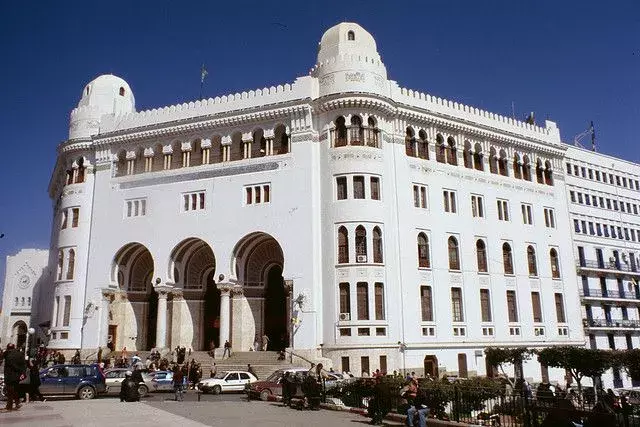
Observatoire d'Alger (Algiers Observatory)
Overall Rating: ⭐⭐⭐⭐☆ (4/5)
Rating Breakdown:
✔ Historical Significance – ⭐⭐⭐⭐⭐ (5/5)
✔ Cultural Impact – ⭐⭐⭐⭐☆ (4/5)
✔ Atmosphere & Maintenance – ⭐⭐⭐⭐☆ (4/5)
✔ Accessibility – ⭐⭐⭐☆☆ (3/5)
✔ Tourist-Friendly – ⭐⭐⭐☆☆ (3/5)
Weather
- Mediterranean climate – mild winters and warm, dry summers.
Tags
- Historical Site, Science & Astronomy, Architecture
Timings
- Not regularly open to the public; access may be granted for special events or educational purposes.
Time Required
- 30 minutes – 1.5 hours (if accessible for a visit or event)
Entry Fee
- Typically not open to the general public; no standard entry fee.
Things to See & Do
- Historical Buildings – Observe well-preserved 19th-century astronomical structures.
- Scientific Legacy – Learn about its contributions to space observation and timekeeping.
- Scenic Views – Elevated location offers panoramic views of Algiers.
- Educational Events – Occasionally hosts academic or public outreach events related to astronomy.
Best Time to Visit
- By appointment or during open public science events.
- Evenings are ideal if access is granted for stargazing or lectures.
Nearest Parking Spots
- Limited parking nearby.
- Accessible by taxi or local transport due to its location in Bouzaréah, a hillside district of Algiers.
Overview
- Historical Observatory – Established in 1890, the Algiers Observatory is one of the oldest scientific institutions in Algeria and Africa.
- Astronomical Research – Historically contributed to important astronomical studies, including tracking asteroids and meteorites.
- Colonial-Era Legacy – Constructed during the French colonial period, it was a key part of the global scientific network.
- Scientific Importance – Played a role in time standardization and celestial cartography.
- Quiet Setting – Surrounded by greenery, the site is peaceful and remote from city noise, ideal for reflective visits and science-focused exploration.
- Main Dome and Telescope – Houses a large refracting telescope used for astronomical observation.
- Meridian Room – Historically used to calculate time and conduct astrometric observations.
- Support Buildings – Includes residences and facilities for scientists and technicians, maintaining their historical structure.
- Panoramic Terrace – Provides a stunning view of the city and coastline from the Bouzaréah hills.
- Commissioned in the late 19th century, the Algiers Observatory became one of the most important research hubs in North Africa.
- French astronomer François Gonnessiat was a key figure in its development, helping it gain international recognition.
- The observatory has contributed to star mapping and minor planet discovery.
- After independence, it remained a scientific institution under Algerian administration and still supports academic research.
- Despite its limited public access, it is recognized as a national heritage site for its scientific and historical relevance.
- The main structure reflects classic French colonial scientific architecture – white façades, domed towers, and ironwork railings.
- The large dome housing the telescope is a focal point, built to minimize vibrations and maximize observational clarity.
- Interior spaces include lecture rooms, offices, and archival storage, preserving the 19th-century layout and design.
- Set atop the Bouzaréah heights, the observatory benefits from a clear vantage point above city lights and pollution.
- Plan Ahead – Visits may require special permission or prior arrangements through academic institutions.
- Respect Access Restrictions – Many parts of the observatory are not open to casual tourists.
- Combine with Nearby Attractions – The Bouzaréah district offers additional spots like the Basilica of Notre-Dame d'Afrique.
- Best for Enthusiasts – Ideal for astronomy or science lovers with a keen interest in observatory history.
- Location – Located in Bouzaréah, in the hills overlooking central Algiers.
- By Taxi – Easiest method, as the observatory is in a residential and elevated area.
- By Public Transport – Accessible via local buses heading toward Bouzaréah; some walking may be required uphill.
- Parking Availability – Limited parking on-site; better suited for drop-off or public transport use.